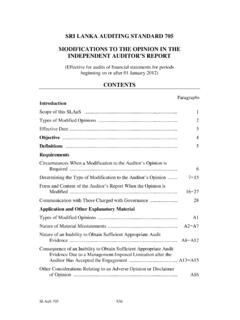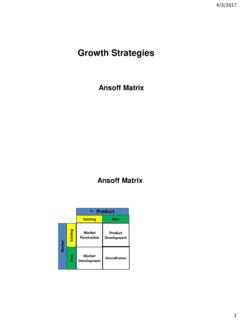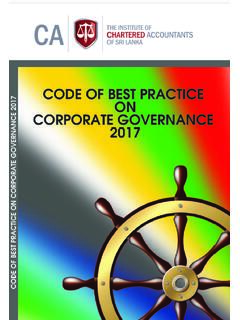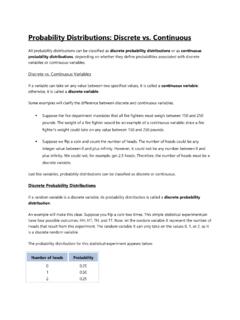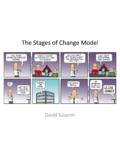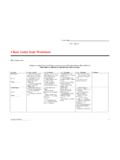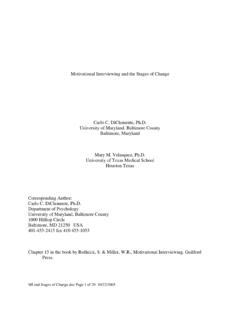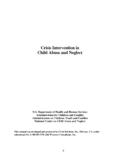Transcription of Chapter 2 Understanding change - CA Sri Lanka
1 Waddell 4e: Instructor s Manual 2011 Cengage Learning Australia Pty Limited Chapter 2 Understanding change Learning objectives To describe and compare major perspectives on changing organisations To identify the differences between the major theories of organisational change Lewin s change model, the action research model and the positive change model To introduce a general model of planned change that will be used to organise the material presented in the book To describe how planned change can be adopted to fit different kinds of conditions Activities Review questions (See text p.)
2 57) 1 Identify the people generally responsible for carrying out planned change efforts. What factors will influence who is allocated these responsibilities? Organisation development (OD) is directed at bringing about change to increase an organisation s effectiveness. It is generally initiated and implemented by managers, often in conjunction with internal or external OD practitioners. This planned change can be used to solve problems, to learn from experience, to adapt to environmental changes or demands, to improve performance, and to influence future changes. Additional activity Students can be divided into groups of three to five and asked to identify three factors that will influence who is allocated these responsibilities.
3 Students should then present their ideas to the entire group. 2 In Lewin s model of change , what brings about the proposed change ? Explain why there has to be variations made, over a period of time, to the original model. One of the early fundamental models of planned change was provided by Kurt He conceived of change as a modification of those forces that keep a system s behaviour stable. Specifically, the level of behaviour at any moment in time is the result of two sets of forces: those striving to maintain the status quo and those pushing for change . When both sets of forces are about equal, current levels of 2 Waddell 4e: Instructor s Manual 2011 Cengage Learning Australia Pty Limited behaviour are maintained in what Lewin termed a state of quasi-stationary equilibrium.
4 To change that state, one can increase those forces pushing for change , decrease those forces that maintain the current state or apply some combination of both. For example, the level of performance of a work group might be stable because group norms maintaining that level are equal to the supervisor s pressures for change to higher levels. This level can be increased either by changing the group norms to support higher levels of performance or by increasing the supervisor s pressures to produce at higher levels. Lewin suggested that modifying those forces that maintain the status quo produces less tension and resistance than increasing forces for change .
5 Consequently, this is a more effective strategy for change . Lewin s model provides a general framework for Understanding organisational change . Because the three steps of change are relatively broad, considerable effort has gone into elaborating on them. For example, the planning model, developed by Lippitt, Watson and Westley, arranges Lewin s model into seven steps: scouting, entry, diagnosis (unfreezing), planning, action (movement), stabilisation and evaluation, and termination (refreezing).ii However, Lewin s model remains closely identified with the field of OD and is used to illustrate how other types of change can be implemented.
6 For example, Lewin s three-step model has been used to explain how information technologies can be implemented more effectively. 3 Describe the three sequential steps in Lewin s change model. Give a current example where Lewin s model is evident. Lewin s change model is made up of three sequential steps: unfreezing, moving and refreezing. Unfreezing involves reducing those forces maintaining the organisation s behaviour at its present level. This is sometimes accomplished through a process of psychological disconfirmation. Moving shifts the behaviour of the organisation, department or individual to a new level.
7 It involves developing new barriers, values and attitudes through changes in organisational structures and processes. The final stage, refreezing, stabilises the organisation at a new state of equilibrium. It is frequently accomplished through the use of supporting mechanisms that reinforce the new organisational state. Additional activity The students can be asked to provide an example from their own professional experience in which Lewin s model is evident. They can do this activity in pairs or small groups of three to five. Students should discuss the model and its implementation in detail.
8 Each group can then provide feedback for the entire group. Chapter 2 Understanding change 3 2011 Cengage Australia Pty Limited 4 What is action research and what is the first step ? What is the relationship between action research and organisation development? Originally developed to help specific organisations implement change and to develop a more general knowledge that can be applied in other settings, action research has been adapted to OD, where the major focus is planned change . The first step in the action research model is problem identification.
9 This stage usually begins when a key executive or someone with power and influence in the organisation senses that the organisation has problems that might be alleviated with the help of an OD practitioner. In one case, the quality manager of an electronics plant had been involved with OD before, but it took her almost a year to persuade the plant manager to bring in a consultant. The action research model focuses on planned change as part of OD as a cyclical process in which initial research about an organisation provides information to guide subsequent action.
10 The results of the action are then assessed to provide additional information to guide further action, which will likewise be assessed. This iterative cycle of research and action involves considerable collaboration between organisation members and OD practitioners. It heavily emphasises data gathering and diagnosis prior to action planning and implementation, as well as careful evaluation of the action s results. Therefore, there is a positive relationship between OD and action research. 5 Name the four basic steps in gathering data. What is the purpose of gathering that data?



